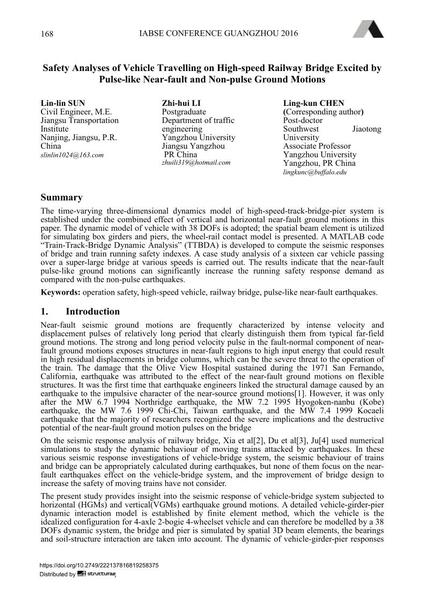Safety Analyses of Vehicle Travelling on High-speed Railway Bridge Excited by Pulse-like Near-fault and Non-pulse Ground Motions

|
|
|||||||||||
Détails bibliographiques
| Auteur(s): |
Lin-lin Sun
Zhi-Hui Li Ling-kun Chen |
||||
|---|---|---|---|---|---|
| Médium: | papier de conférence | ||||
| Langue(s): | anglais | ||||
| Conférence: | IABSE Conference: Bridges and Structures Sustainability - Seeking Intelligent Solutions, Guangzhou, China, 8-11 May 2016 | ||||
| Publié dans: | IABSE Conference, Guangzhou, China, 8 – 11 May 2016 | ||||
|
|||||
| Page(s): | 168-172 | ||||
| Nombre total de pages (du PDF): | 5 | ||||
| Année: | 2016 | ||||
| DOI: | 10.2749/222137816819258375 | ||||
| Abstrait: |
The time-varying three-dimensional dynamics model of high-speed-track-bridge-pier system is established under the combined effect of vertical and horizontal near-fault ground motions in this paper. The dynamic model of vehicle with 38 DOFs is adopted; the spatial beam element is utilized for simulating box girders and piers, the wheel-rail contact model is presented. A MATLAB code “Train-Track-Bridge Dynamic Analysis” (TTBDA) is developed to compute the seismic responses of bridge and train running safety indexes. A case study analysis of a sixteen car vehicle passing over a super-large bridge at various speeds is carried out. The results indicate that the near-fault pulse-like ground motions can significantly increase the running safety response demand as compared with the non-pulse earthquakes. |
||||
